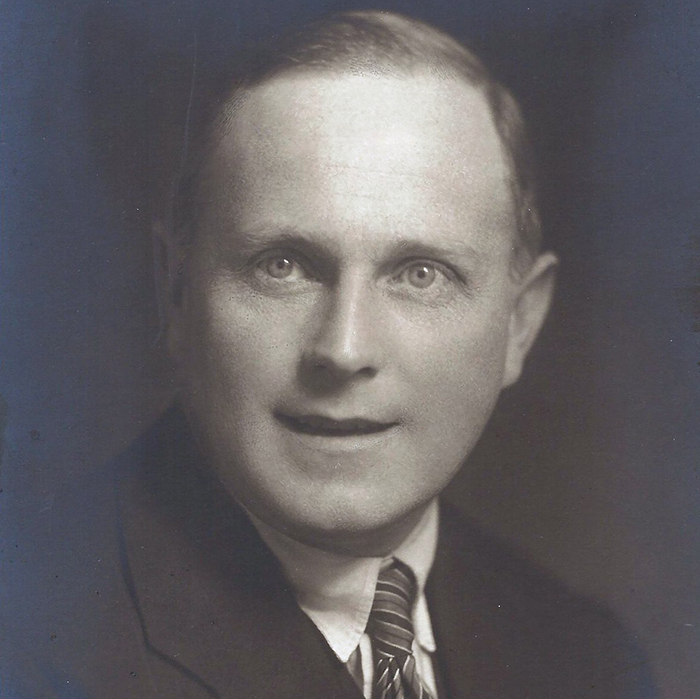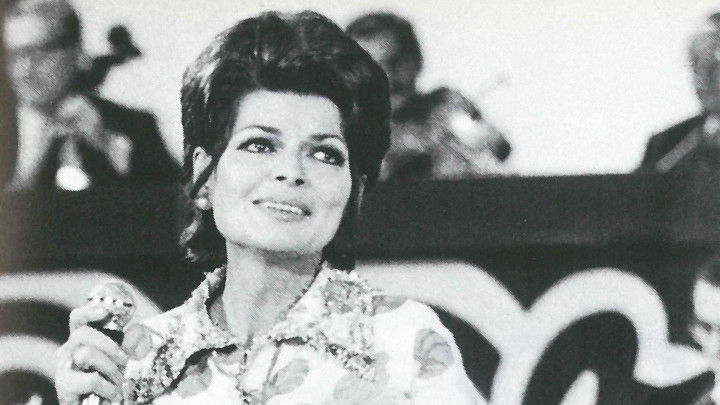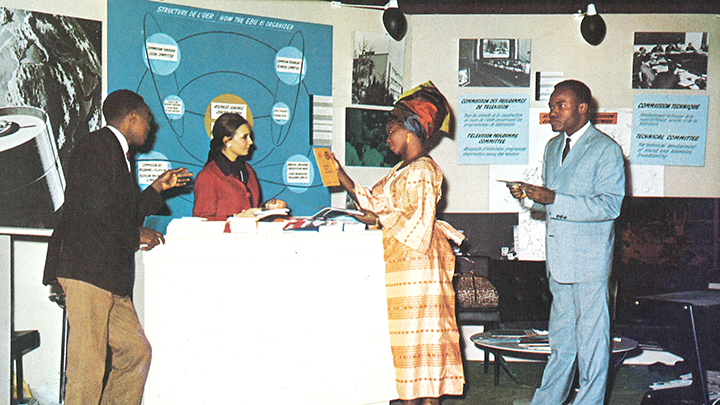Our History
What’s the common thread that links ABBA, the Animals of Farthing Wood, News, Sport, Music, Drama, Digital Radio and Television, Internet Streaming, and the Beatles? They are all part of the EBU’s long history. Down the years, hundreds of dedicated programme makers, engineers, lawyers and more, and scores of specialized communities of both Members and staff, have worked to help make public service media what it is today - and what it will be in the future.
The EBU’s predecessor – the IBU

The story begins in the years before the European Broadcasting Union (EBU) was constituted in 1950. In 1925, driven by the birth of radio broadcasting across Europe, the EBU’s predecessor, the International Broadcasting Union (IBU) was established in Geneva, Switzerland.
Many supported creating the IBU, but among them was John Reith, the first Managing Director of the BBC in the UK. He had a simple and lasting vision for the purpose of public service media that echoes down through the ages – their task is to ‘educate, inform, and entertain’.
Reith directed his finest staff to serve the IBU and its committees. They included the IBU’s Secretary General, Arthur Burrows, who was also the first Director of Programmes for the BBC in the UK. As well as making sure their members had the airwave frequencies they needed, he and his multi-national colleagues strived for the next fifteen years to advance the idea that the IBU and broadcasters could help people of different nations to understand each other, and thus engender peace, by bringing programme content, ideas, and methods, created in one country to others. Burrows left the IBU in 1941 disappointed that war had come in spite of his dream, but his ideal lived on in the soon-to-be-formed EBU.
The birth of the EBU and Eurovision

In the tumultuous years that followed, the World War, then the Cold War, held back progress in international cooperation. But, by 1950, the dust had finally settled and broadcasters from Western Europe came together in a hotel in the English seaside town of Torquay to form the European Broadcasting Union.
Broadcasters in Eastern Europe created the International Radio and Television Network (OIRT) - an organization that existed for a further 40 years until it disbanded in 1992 and its Members joined the EBU to make the family complete again.
From the early years of the EBU, Marcel Bezençon (EBU Programme Department) among others took up the baton for making programme content from one country available to broadcasters in other lands. Soon all EBU Members came to see the value of this, and the ‘Eurovision’ network was born. (The name itself came from a Journalist, George Campey.)
Eurovision was a technical system of media content interconnections initially across Europe, but later progressively linking to the world. It allowed content to be exchanged, seen and heard, as it happened or recorded for later use.
The Eurovision giant spider’s web of connections has grown with demand – reaching out to many others, not just EBU Members. In fact, the Eurovision technical network now operates as a subsidiary of the EBU – Eurovision Services – to serve companies throughout the media and event industry.
The applications of Eurovision
Returning for a moment to its origin in the early 1950s, once set up, Eurovision needed to be well used. Initially, though many others came along, three types of programme content seemed valuable to exchange, because of their universal interest. These were - and still are - News, Music and Sport.
Procedures for news content exchange between Members were established early on, with the News Exchange launching in 1961 and continuing to this day.
Music exchanges were first organized by the pre-EBU organisation, the IBU, and the Music Exchange was launched in 1967. Music was, and is, a universal language readily enjoyed across the world.
The EBU also began to collectively purchase the rights for coverage of major sports events. Today it brings over 170 major sporting events to hundreds of millions of viewers across Europe and beyond.
Ideas for programme formats

Stopping in time for a milestone moment in the mid 1950s, EBU Members received proposals for two programme formats from its Members that seemed likely to appeal across nations.
The first was a pan-European version of the ‘San Remo Song Festival’.
The second was a pan-European version of a national TV show ‘Top Town’. Here, individual towns put up teams to play games with other towns.
These two proved amazingly successful in their international forms. The first became the Eurovision Song Contest. It has gone from strength to strength. ABBA and many more made their names there. It is now viewed by up to 200 million enthusiastic viewers each year. It is the most successful entertainment show ever made. The second became Jeux Sans Frontieres (in English: It’s a Knockout), which thrilled viewers for many years.
A myriad of other programmes have since been made by collaboration over the years for both radio and television – international competitions, classical and popular music events, children’s fare such as ‘the Animals of Farthing Wood’, and more. The EBU is uniquely able to organize communities of its radio and television broadcaster ‘creatives’ to work together and share ideas.
The EBU and media technology
Media rests on the bedrock of technology, and the EBU has always been in the vanguard of developments. It was intimately involved in colour television. It worked on analogue radio systems. It has been instrumental in planning the way the airwaves are used internationally since the days of the IBU. The EBU’s work made possible ‘frequency plans’ for both satellite and terrestrial broadcasting and it has drawn up many production technology guidelines and standards.
There was a moment in technology in the early 1980s that was a turning point for the media. The EBU cannot claim to have invented ‘digital television’ but, without the EBU, it would have been fragmentary. The EBU, working with other broadcasting unions and the SMPTE, led the world to a common technical standard for digital television in 1982 called ‘ITU Recommendation 601’. This is the building block on which all digital vision systems have subsequently been built, from standard definition television to today’s ultra-high definition television. It’s behind every digital archive, packaged media, and download.
The EBU supported and encouraged digital radio broadcasting DAB in 1988. It did likewise in 1993 in the setting up of the DVB Project to bring digital television broadcasting to viewers. As a measure of its success, today in 2020, over 1.5 billion viewers throughout the world are using DVB systems.
The partnership of content and technology
The media always has depended on, and always will depend on, the partnership of content and technology. There are many stories to tell. One milestone occurred in 1967. An EBU television programme experience beyond the technical imagination of the time was brought to life. Many early generation satellites, a million kilometres of cable, thousands of people behind the scenes, and four hundred million viewers watching across the world in 24 countries - the 3-hour live programme experience ‘Our World’. The Beatles performance in it of ‘All You Need is Love' somehow mirrored the age. The dreams of Burrows and Bezanḉon were coming true and blossomed in the years that followed.
The need for many capabilities

Media rests not only on technology and the ability of the programme maker. It also needs legal understanding and skills. From the days of the IBU, protecting and arranging copyright issues have been a major activity for the EBU, as have the legal frameworks for public service media, and the manifold occasions when a legal dialogue and decisions are needed.
There are many other capabilities that EBU Members need including Human Resources, Training, Communications, Finance, and ‘media market awareness’. All of these have been aided by EBU staff and Member communities.
Looking forward
Change itself is the only permanent facet of the media. The last decades have seen huge changes in media content, technology, and ways of experiencing media. Through it all, the EBU’s public service Members have navigated with the one simple and immutable principle – that they are media with a purpose.
It is our job at the EBU to ensure the public can continue to access and enjoy this media where and when it needs to for the next 70 years. That’s why our content, technology, legal and policy teams will continue to champion and campaign for high-quality media in the public interest. Together, we must ensure future generations can also benefit from content that can truly ‘educate, inform and entertain’.
Timeline


1950
The first international television link between France and the UK is made. British viewers were able to watch a festival taking place in the town of Calais, including a fireworks display at the Place de l'Hotel de Ville.


1953
The Coronation of Elizabeth II was the first event to be broadcast live internationally. People crowded in front of the few available television sets to see the magic happen.





1960
The EBU buys the rights to the Rome Olympic Games for USD 1.2 million, the first of many collective rights agreements.




1967
The Music Exchange launches its first concert season, starting with the English Chamber Orchestra at the Queen Elizabeth Hall in London.


1975
EBU Members encourage the adoption of Teletext, following the BBC’s launch of Ceefax (the world’s first teletext information service) in 1974.


1982
The EBU receives an international Emmy Award for the design of a world standard for digital television accepted by the ITU.



1993
The Digital Video Broadcasting (DVB) project helps set digital broadcasting standards for much of the world over the next two decades.


1995
The EBU is central to agreement on a common worldwide standard for digital radio at the ITU.


1998
Working with the ITU, the EBU helps achieve a worldwide standard for high definition television.


2011
EBU sparks a Loudness Revolution initiating an international agreement to address disparate levels of volume between programming, trailers and advertising.


2012
The EBU drives the technical standard for ultra-high definition television with the ITU. The standard enables NHK and the BBC to film parts of the London Olympic Games – the EBU’s biggest ever operation – in UHDTV.


2015
The EBU works with Belgium Member VRT to create the world’s first live production studio using solely IP technology.











